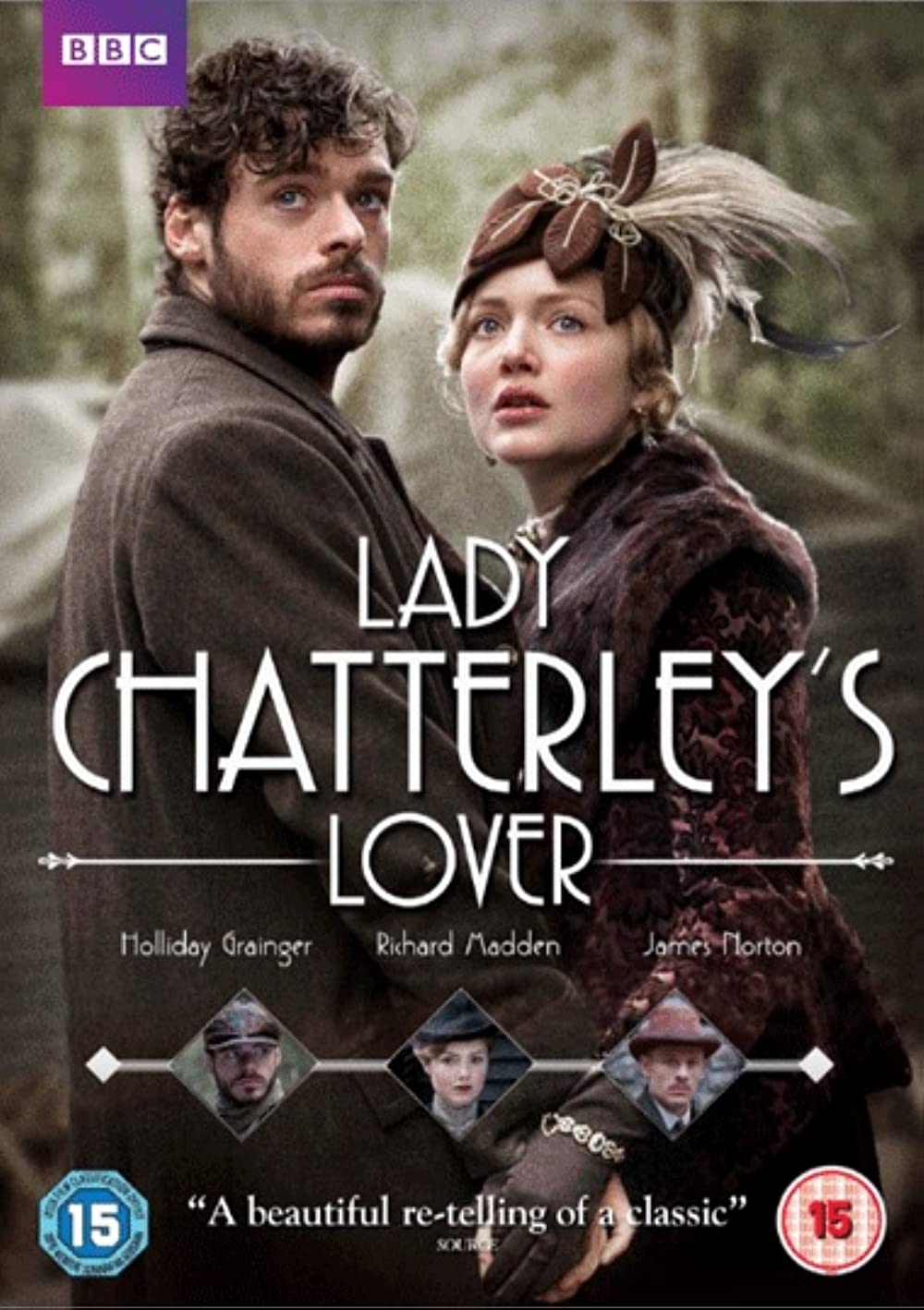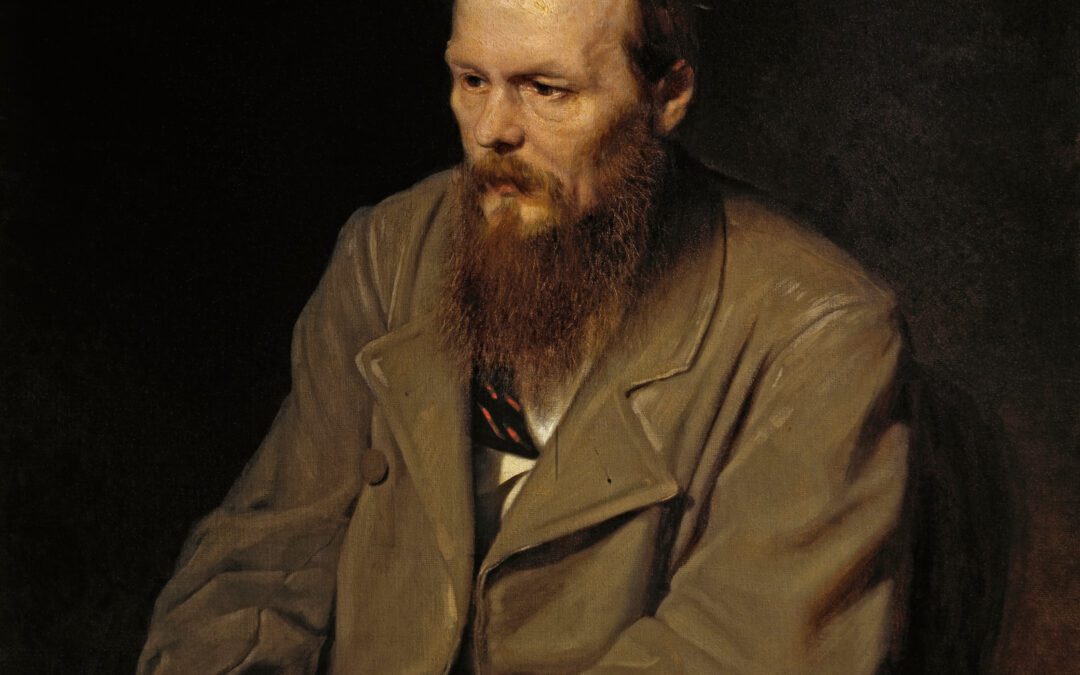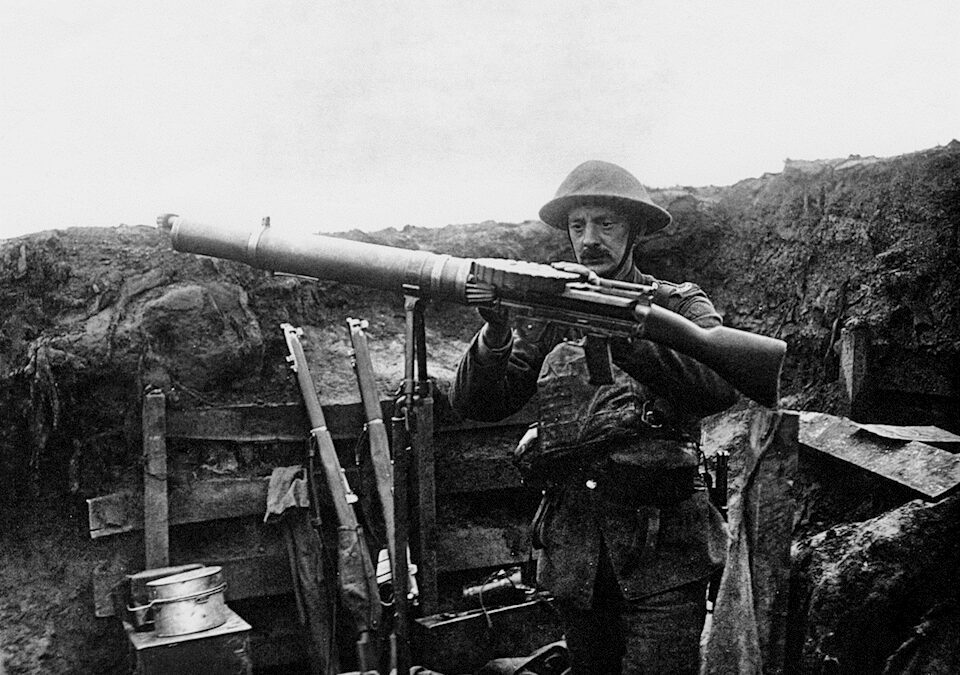The following was given as a paper at the 2015 D.H. Lawrence Conference at the University of Nanterre, Paris. The topic of the conference was ‘DH Lawrence among Women’, which was adumbrated in the Call for Papers by the Conference Organiser, Ginette Roy, as follows:
‘Passionately a “son and lover” Lawrence created a number of female characters which are a testimony both to the women he knew in his life and to the more general process of profound change in the status of women at the beginning of the twentieth century. His heroines are definitely modern and are women in the world, unlike Tennyson’s Lady of Shalott, whom he repeatedly mocks. While Lawrence showed a passing interest in the feminist movement he quickly came to conceive of it as a threat to the fulfillment of both men and women. Strong-willed women inspired him with a mixture of fear and fascination. Hence the dream, cherished by one of his heroes, of a “star-equilibrium” between the sexes. His heroines, notably the famous Lady Chatterley, are moderately willful, aspiring to a type of emancipation which differs from that envisaged by the feminists, a form of emancipation, harmless to the stability of the couple, which has often been misunderstood as being purely sexual. Lawrence’s work may perhaps be read as a persistent questioning on the importance of woman in the building of a new society.
This conference invites proposals from Lawrence scholars and gender studies specialists on both the ambiguous relation of Lawrence to women and the relation of women writers, biographers or film makers to Lawrence. These topics will be explored from various angles : gender studies, literary history, social history, psychoanalysis, philosophy etc.
The following is a provisional, non-exclusive list of possible themes :
• Femininity (in women or men). Women’s special talents. Women’s voices.
• Metaphorical associations.
• Lawrence and the question of women’s sexuality
• Lawrence and female stereotypes. Is there an ideal woman for Lawrence ?
• Lawrence and antifeminism. Misogyny, satirical attacks on women
• Women’s education.
• Women’s authority or power. Women and art. Women and literature
• Women and social constraints, women and morality
• Women as agents of progress or regression
• Motherhood
• The narrative point of view of Lawrence’s heroines, the dynamics of their position in dialogue
• Lawrence’s acknowledged or obvious influence on other women writers or artists’
SCREENING ‘LADY CHATTERLEY’S LOVER IN 2015’
My 25-minute paper appears below as delivered:
Contrary to the claim of the conference programme, this session will involve no film screening, because the 2015 BBC Lady Chatterley’s Lover is strictly under wraps until it is broadcast, at the earliest, this August.
Not only that, but the details of the film – some of which I will reveal – are also under wraps, and therefore I must ask you not to spread them far and wide. Do not, in other words, Tweet this talk.
In April 2014 the BBC announced that it was to adapt four works as ninety-minute films for BBC1: Cider with Rosie (1959),The Go-Between (1953), An Inspector Calls (1945), and Lady Chatterley’s Lover (1928).
Join the dots.
The Controller of Drama at the BBC, Ben Stephenson, commented: ‘Whilst each film will stand as a wonderful treat in its own right, themes about the role of women, class, sexuality and impact of the First World War will ebb and flow across them. I hope that, viewed together, these four masterpieces will present an intelligent and involving picture of what it was like to live in Britain 100 years ago.’
Which I think implicitly admits that they have very little in common.
The director of Lady Chatterley Jed Mercurio, though born only four years before Kate Millett’s Sexual Politics, was well-educated in Lawrence at school, and confident that Lady Chatterley’s Loverwas the only really great work of these four.
Conscious of the feminist revisionism which had attacked the novel, he accepted his commission in the spirit of partisanship, and, acknowledging that Lawrence was doing ‘his work for women’ in this late novel of Love Triumphant, wished to do ‘his work for Lawrence’.
But I wanted to know more specifically from him, what he wanted to say to the English license-fee-payer now, given what Lawrence had had to say to the English in 1928. The very concept of the guilt, with which the Crown charged in the novel in 1960, is now the object of mockery; the word ‘adultery’ has an old-fashioned ring, and is fast going the way of ‘fornication’; class distinctions, though not obliterated, carry relatively little charge in their transgression by sex; the mechanised coalmines of which the novel laments the rise have declined and fallen; the high-fallutin and wide-ranging intellectual discourse of Clifford’s flannel-trousered Cambridge intransigents is hard to imagine amongst Cambridge graduates of today; and so the world of which the novel implicitly dreams is in many respects our own. Would the motivation of this adaptation be to honour the historical debt, not paid by British TV since 1993, to the novel which helped us to get to where we now are?
Or would the resurrection of a novel which sought to sever sex from smut, but which has itself become a byword for smut, and launched a thousand lingerie ranges, reinforce that association, as did the Ken Russell miniseries of 1993?
And how, finally, would this adaptation deal with the novel’s phallocracy, and hostility to the clitoris, which only a couple of years ago led Germaine Greer to assert that she damned Lawrence to hell for this novel?
The answers to these questions emerged over the course of our engagement, during which I, as ‘literary consultant’ – or ‘DH Lawrence expert’, as the closing credits charmingly put it – advised on about eight drafts of the script, and watched the filming and editing. It occurred to me that I, as a middle-class female academic advising a working-class son of Italian immigrants to the West Midlands, had a little of the role of Frieda, as she heard the work in progress that was the novel, over its successive drafts over many months, and supportively advised, including by writing a description of the female orgasm. I wasn’t asked to do that – but was conscious of advising asa woman, to a man. And that he had at all times the power to accept or reject my contributions, as the principal creator. I was not, of course, init, as Frieda is in the novel as the chief amongst several inspirations for Connie, but Mercurio was kind enough to put me in it, under the name Countess Hannele zu Rassentlow, as an extra who addresses this line to Constance: ‘I hear great things concerning Sir Clifford’s power station’.
One of the first things that struck me about Mercurio’s interpretation was that it emphasised class conflict, to a greater degree than either the 1993 Ken Russell BBC miniseries, or Pascale Ferran’s 2006 film Lady Chatterley et l’Homme des Bois.
This conflict irradiates the relationship between Clifford and Mellors, the compression of the 300 page novel into 90 minutes’ of playing time making both characters function as strongly metonymic of their respective classes.
Clifford’s role as an innovator in his coalmine is emphasised – for example by my line – and, as in the first two drafts of the novel, there is little ambiguity in Mellors’s own class. Like Parkin, he has neither served in India nor become an officer. Instead, he serves under Sir Chatterley on the Western front. He has Parkin’s class resentment, if not the first Parkin’s eventual Communism.
Since Mercurio has read neither of the first two drafts of the novel, this coincidence might be the product of his own politics, and/or be a response to a type of anger existing in austerity Britain at the moment, as it had more obviously in the England of the General Strike, which Lawrence visited just before starting the novel.
This stress on class is further emphasised by two other elements.
First, budgetary constraints meant that the adaptation was set entirely in England, without any visit to Venice or the South of France, and therefore no option outside of the English class system, such as a Venetian gondolier, to Connie, or to us as interpreters of the characters.
Secondly, the adaptation places considerable weight on the war. The screenplay was written in the centenary of the war’s outbreak, when the English media was saturated by commemorations – and it may also be relevant that Mercurio is a former army doctor. This concentration is achieved not just by connecting Clifford and Mellors as officer and man in the war, in a scene that is shown, but by moving many of the novel’s events earlier in time. In the novel Clifford and Connie marry in 1917, six months before Clifford is shipped home more or less in bits. Connie meets Mellors in 1923 and their affair starts around April 1924. Mercurio shifts Connie and Clifford’s first meeting to 1912, their marriage to 1914, the affair to 1918 and the breakup of the marriage to 1919. In an interpolated post-armistice ball, there are injured officers present in uniform, and Mellors relates to Clifford as a former subordinate.
The relevance of this emphasis on class to the gender politics of the adaptation is that Connie has an initial, brittle, class-based hauteur in her relations with Mellors, and her middle-class distinction from Clifford himself is elided. Unlike in any version of the novel, she is seen riding, in a manifestation of physical and social elevation. But the result is not her condign abasement by the working class hero. Her connection to Mellors is, in my understanding of the film, sufficiently emotionally credible and healthily mutual that it involves no element of class triumph on Mellors’s part – although this is less the case of the final, agonistic scene between Mellors and Clifford.
The shift in time also means that all of the characters are played rather younger than they are in the novel, with casting choices made accordingly. Connie has little time to peak, pine, and shock Hilda, or in an earlier draft her father, into action. She is impelled neither by emotional desperation, nor reflection upon her hopeless situation, nor revulsion from a Michaelis – who is cut – into Mellors’ arms. Her connection to Mellors is fast and instinctive, as each pulled out of marital cynicism and pain by equivalent impulses, which render them equal as well as connected.
Mrs Bolton is a good ten years younger than she is in the novel even given this movement forwards in time. A very young, attractive widow, there is no quasi-sexual relationship between herself and Clifford; rather, her feeling towards him is more simply one of class antagonism, prompted by the death of her husband and her economic treatment subsequently. Her speech to Connie about Ted is given considerable prominence, and her relationship is posited as having had the kind of health and validity as that which we see develop between Connie and Mellors. She functions in the film as a woman of sexual appetite, passion and dignity.
But the class politics and anti-industrialism of the adaptation led at a certain point in the script’s development to what I found to be too negative a presentation of Clifford. In his increasingly monomaniacal involvement in mine modernisation he ended up derogating from the heightened naturalism to which the adaptation otherwise clove. Mercurio conceded this and made certain modifications to retain his pathos. I also questioned him noting with asperity on his wedding night that his bride was not a virgin. I felt that this was out of keeping with Clifford as represented in the novel, who is not a prude even before his injury, and chooses for himself a liberated, German-educated girl.
I also questioned a scene in which Connie, at an interpolated ball in 1913 at which she meets Clifford, asked the musicians to switch from sedate classical music, which they had been playing, to ragtime. This echoed not only a similar moment in the 1987 film Dirty Dancingbut the scene in Russell’s Women in Love, in which Alan Bates’s Birkin mischievously asks a pianist accompanying Hermione’s Ballet Russe to switch to ragtime. This latter detail was itself more Russell than Lawrence, but in the context of Lady Chatterley’s LoverI thought it even more unfortunate, since jazz is throughout the novel associated with shallowness, ‘Fellows with swaying waists fucking little jazz girls with small boy buttocks’, as Tommy Dukes puts it.
At no stage in the novel is Connie much into this kind of thing, even when having cocktail-like sex with Michaelis. German-educated she may be, but a proto-flapper she is not.
I suggested that the events might be reversed. Rather than requesting that the music be changed from Classical to ragtime, she makes the opposite request, finds that her heart and mind connect with Clifford’s over that, and they go on to quote Keats – inverting a later moment in the novel in which Keats’s response to nature comes between her and Clifford and her and nature, by placing Keats upfront in bringing them together in the first place.
Just as I suggested that Clifford – in the absence of any Cambridge friends, retain his culture through such a hint, I also suggested that a few rough edges be knocked off Mellors. He would not, I argued, suggest going for a pint with his fellow miners, nor would he drown his sorrows, at a low point in his relationship with Connie, in whiskey. He need not be the class-ambiguous character of the final draft in order to avoid being an archetype of the working class, as opposed to a rather sensitive and reclusive member of it. The man to whom the Connie of the adaptation is, I think, credibly attracted is not attractive by virtue of coarseness.
Most importantly for the gender politics of this adaptation, like all of the film adaptations of the novel of which I knew, the sections which have attracted the most feminist criticism – Mellors’s complaints about his former wife’s procurement of clitoral orgasms – were cut. I could understand why. They would require considerable space in order to be absorbed into the sexual political economy of the adaptation as a whole. The words as spoken, more than as read on the page, would sound harsh, if not also absurd. They seem to fly directly against the prevailing feminist winds. And, given that sexual practices and preferences change over time, along with their associated politics, a leap of historicist understanding on the part of the audience would be required, of a kind which it might not be worth trusting in, if what one wanted to emphasise and not obscure was a central, and healthier, relationship of the novel.
As for that relationship’s involvement of phallus-worship – the other main object of feminist critique – that is largely an assertion of the narrator’s words, not Connie’s, and therefore less translatable to screen. If it were to be, as it were, mimed, then it would run into all of the problems associated with representing sex on screen.
The verbal has, of course, has a distinct power to arouse, as those who prefer to read their pornography, or talk ‘dirty’, know. Nonetheless, the sight of naked strangers has a distinct power to arrest the attention, especially in England, as opposed to Frieda’s Germany with its Freikörperkultur; as recently as 2011 critics of the BBC’s Women in Love made much of the nudity which it contained. Lady Chatterley’s Lover is, by Lawrence’s own statement in A Propos,an attempt to think through sex:
‘I want men and women to be able to think sex, fully, completely, honestly, and cleanly. Even if we can’t actsexually to our complete satisfaction, let us at least think sexually, complete and clean.’
This thinking is, arguably, to be done through response to Lawrence’s prose, not through seeing strangers – actors – paid to be naked, which Lawrence would have classified as a form of prostitution. Moreover, the interaction between them and an absent film audience might be classed by him as an ersatzconnection bearing a similar relationship to real physical encounter as First World War warfare to hand-to-hand combat. Of course, he had presented naked bodies abundantly to the eye in his paintings, but these remained firmly within the artistic sphere of the imitative, as the nudity of an actor does not.
As it is, however, the sex of the film is restrained. Film sex has, since the unbanning of this very novel, become so familiar, and the sex which takes place in this novel in particular has become so culturally familiar, that only gestural references are needed – or, indeed, permitted by the BBC’s decency guidelines, which were not entirely blown away by the winds of 1960. Phallus worship could not have been represented, even if Mercurio had wanted to do so, which he did not.
But what would not require a translation of medium is the language of sex, which Lawrence wished to purge of its association with smut. When asked to expurgate it from his novel for the sake of getting it published he wrote:
‘impossible! I might as well try to clip my own nose into shape with scissors. The book bleeds.
Such words as those he refused to excise were held up by Mervyn Griffith-Jones at the Lady Chatterleytrial: ‘words – not doubt they will be said to be good old Anglo-Saxon four-letter words, and no doubt they are, but they appear again and again. These matters are not voiced normally in this Court, but when it forms the whole subject-matter of the prosecution, then we cannot avoid voicing them. The word ‘fuck’ or ‘fucking’ occurs no less than thirty times. I have added them up, but I do not guarantee to have added them all up.’
This indicates that Lawrence’s attempt to clean these words had by 1960 got nowhere, and it has got no further since. I quote Mercurio’s email to me on BBC policy:
‘Currently fuck is strongly discouraged and cunt is unacceptable. They count number of uses and proximity to programme start. Every use of fuck would have to be approved at Controller level’.
He went on to explain that sometimes words would be approved on the shooting script by Compliance, the new name for a department which used to be called Taste & Decency, but people can get nervous prior to broadcast and demand that lines be revoiced, which is an inducement to caution from the outset.
Even had they be contained, it is doubtful that they could be durably cleaned by any adaptation, Lawrence’s own artistry having failed on this point. One effect of course is to curtail Mellors’s didacticism, which where retained, however, is sympathetic.
We also had considerable discussion on the question of oral sex. In one draft there were a couple of instances of oral sex performed by Mellors on Connie, to which I objected, not being able to think of any even implied oral sex in Lawrence’s complete works. I also thought that this practice would have been far less common in Lawrence’s time for reasons of hygiene, and, from what Lawrence did write I thought it likely that he would not have approved of it.
In response Mercurio said that he was adapting the novel for the present and using the sexual language of the present. If this particular act gave the adaptation a feminist edge, and created a still greater distinction between Clifford’s sexuality and Mellors’s, then this suited his purpose in his presentation of the novel as a whole.
There is of course one overriding problem for feminists in the contemporary film industry, which is the imperative to cast female leads in conformity to contemporary tastes in beauty, to a greater extent than the male leads, and irrespective of the nature of the part concerned. Connie is, of course, explicitly disjunct from the slim, androgynous female standard of her own time, being a bonny Scotch trout. Here, I was reassured by Mercurio’s casting, Holliday Grainger not being physically wrong for the part – nor is attractiveness unequally spread between the genders, although Richard Madden as Mellors rightly does not rejoice in a towering of muscular manhood, as Mellors does not.
So let me return to my questions of the opening – what this adaptation has say to England today.
In its voluntary as well as necessary avoidance of visual and verbal explicitness it avoids collusion with the pornography culture which the unbanning of the novel did so much to make possible, and with which the sense of the novel is in so much conflict.
Its representation of the breakdown of a marriage carries a historicist frisson rather than the contemporary shrug, in the context of common marital instability. What Connie does in leaving her husband is represented as enormous, and right in proportion to its social wrong.
Connie’s and Mellors’s relationship is presented as holistic, not merely or even dominantly sexual. Over 90 minutes, one can believe it; Lawrence set himself a far harder task over three hundred pages, which is one reason why he had three such various attempts at it.
Their sex is part of a good life but not its criterion, thus avoiding that distortion of Lawrence’s thought which, as Richard Holbrook rightly pointed out, has rooted in contemporary culture: that if you aren’t having lots of ‘good sex’ (not what Lawrence would have understood by this phrase), then you are socially and existentially inadequate. Sex in our culture is a cocktail, but it is important to our sense of worth that we drink very many really good cocktails.
If this adaptation does not confront this tendency head on, at least it does not tend to confirm it.
And as such, I find it the most Lawrencian adaptation which has yet been made of this novel: very English, more naturalistic than many of his works or their adaptations, socially angry, and urgent in its desire to represent a relationship of profound health. It seems in the nature of Lawrence to attract pungent directors, whose strong flavour dominates their adaptation. No thanks to me, I think that Mercurio had the humility to trust Lawrence, as well as the confidence to stress what is most compatible with the contemporary feminism which is only ambiguously one of this profoundly influential novel’s legacies to the present.




